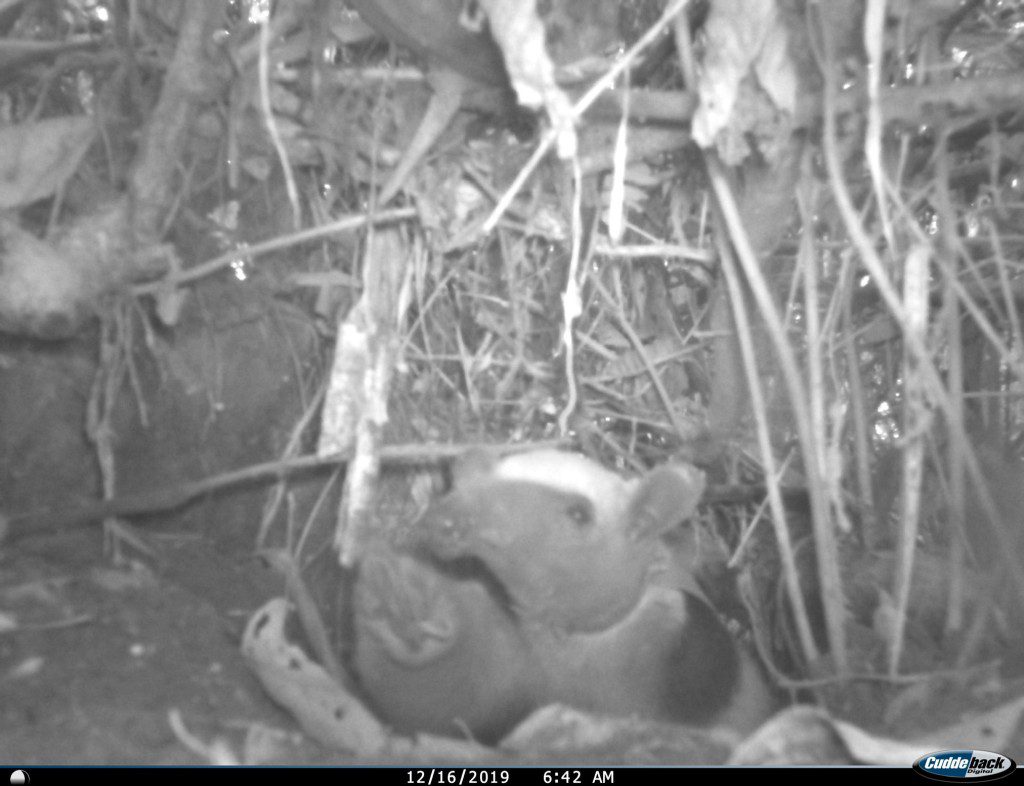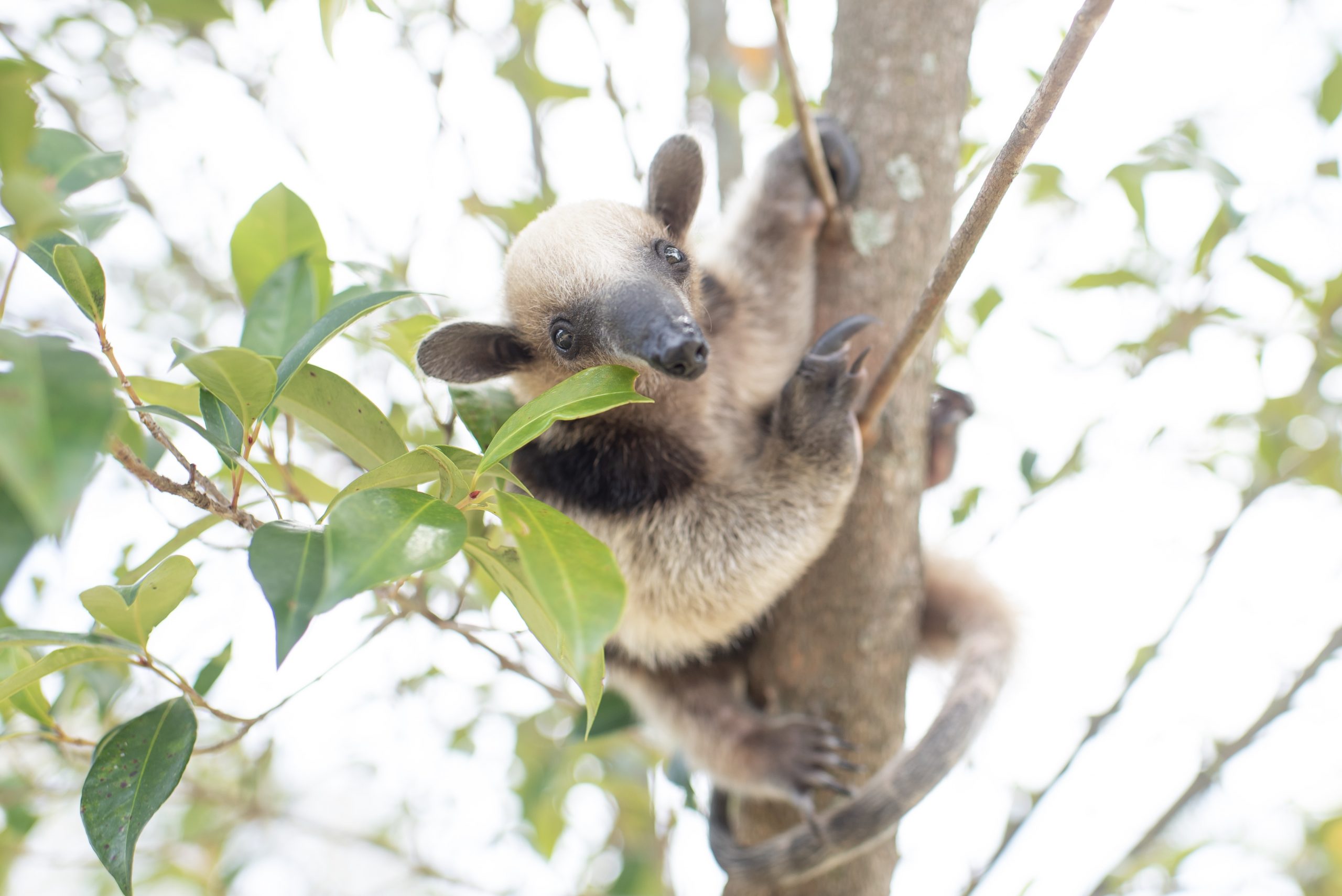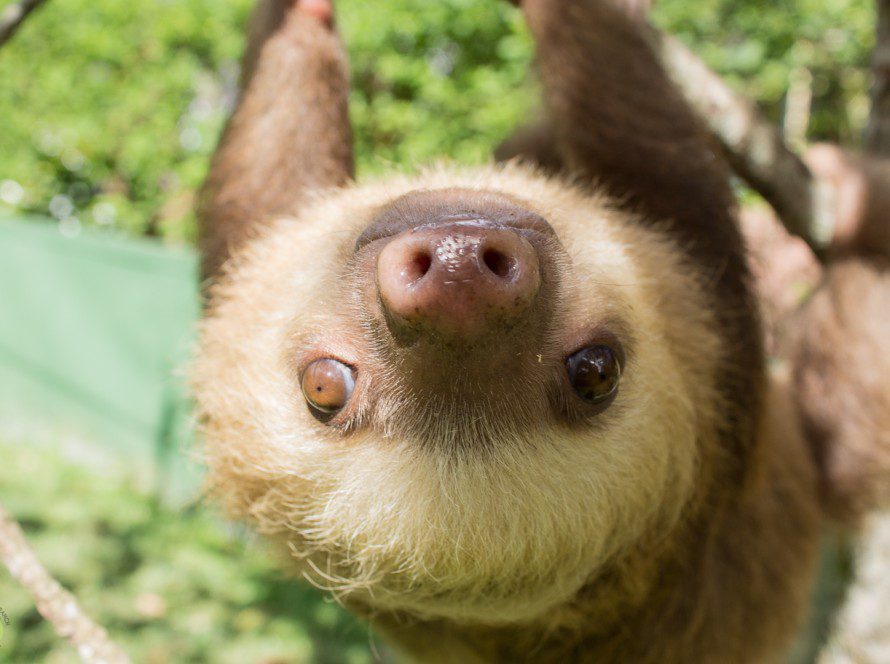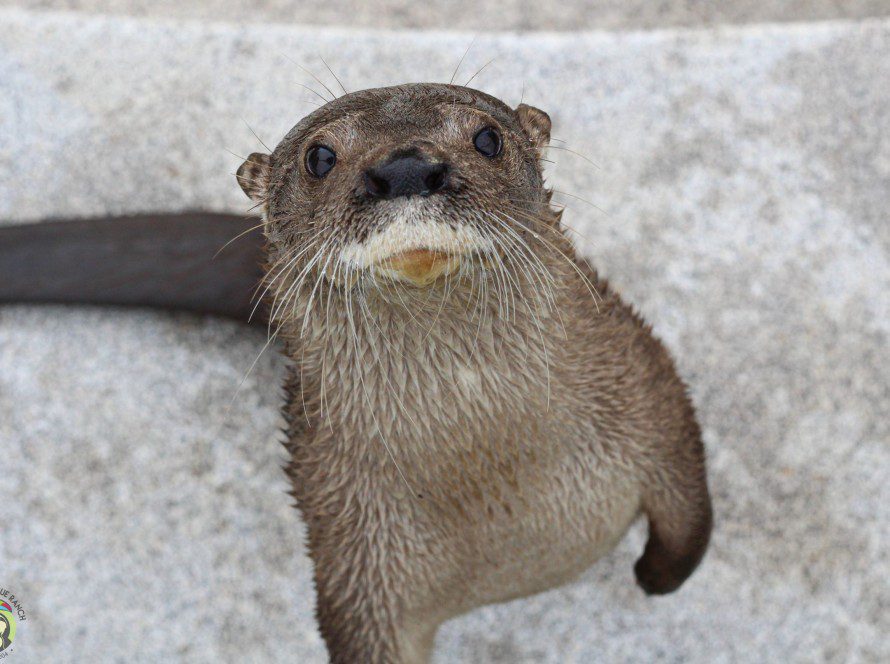January 26, 2020 at 11:20 am was the last time I saw Pebbles. Pebbles, the tamandua anteater I had been observing and preparing for release at Toucan Rescue Ranch’s (TRR) Release Site since September, vanished the next day. It was not until three stressful nerve-wracking weeks later that I would learn the truth of what happened to her.
January 26. It was a clear sun-saturated morning in the neighbor’s cattle pasture – the area where Pebbles chose to live since her release on New Year’s Day. Little had changed in the last month; she stayed in the same two burrows and didn’t travel more than two or three hundred meters in search of ants and termites. Like any other day, I located Pebbles using an antenna, which picked up radio signals produced every second by an emitter device attached to an adjustable leather harness she wore. The radio waves were converted into a heartbeat-like sound by the receiver box connected to the antenna. Pebbles constant 60 beats per minute (bpm) “heartbeat” grew louder when I pointed the antenna in her direction and the closer I approached her.
When I found Pebbles that day, she was eating ants as usual. I remember our last moment together like it was yesterday: Her claws were digging into a fallen tree and her powerful forearms were ripping off the hard skin of the bark to expose the juicy veins of bustling ant highways within. Her long sticky tongue was like a machine gun raining bullets on the now scrambling army of ants, rapidly firing in and out up to 160 times a minute with deadly precision. A few courageous ants swarmed on to Pebbles’s body to bite and sting her, but she swatted them off with her claws without missing a beat as if they were nothing but a mild annoyance. She was a force of nature, a walking disaster, a God. And the ants were helpless before her power. This dramatic scene was not unique, it would replay with minor variations hundreds of times every day. However, as Pebbles’ devoted observer and caretaker, I never grew bored watching her. Like a powerful Queen, she demanded my full attention, loyalty, admiration, and awe. Every little moment felt historic and worthy of being recorded in the minutest detail. I just wish that we could have shared more moments together.
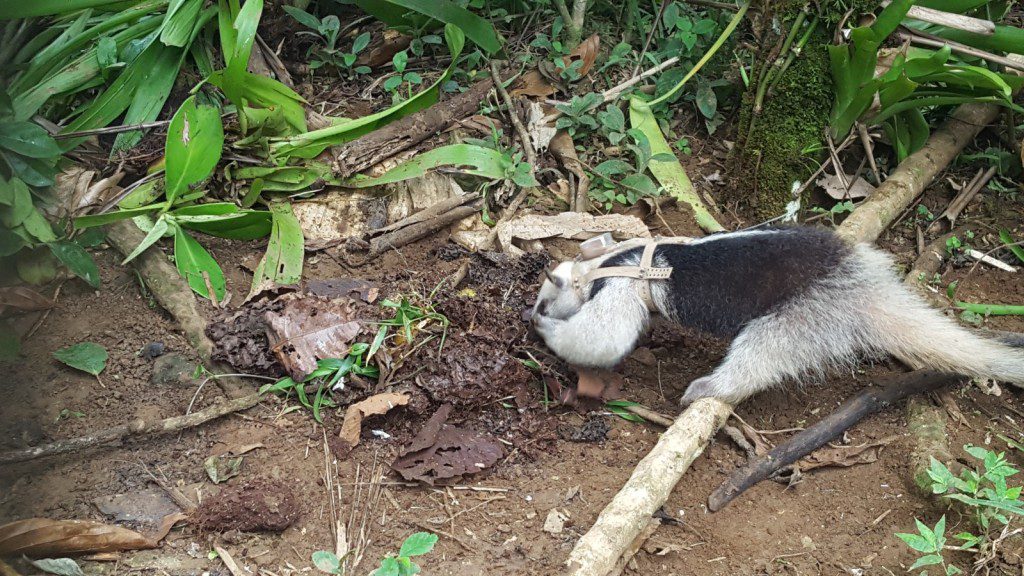
I left early that fateful day to meet with staff from Tirimbina, a nearby biological preserve, to make final preparations for Pebble’s arrival. My plan was to move Pebbles from the TRR release site in Nazareth to Tirimbina and continue to monitor her behavior for at least six weeks, then take the radio harness off for good. Like TRR, they would pay for my housing and food. In addition, I could use their weather station, GIS maps, and laboratory to aid in my research. We decided we would release her on Valentine’s Day – It was a dream come true.
But it was not to be. When I returned from Tirimbina, the evening of January 27, Pebbles “heart” stopped. The antenna received 0 bpm, which meant she was out of range and I needed to travel further to find her. That or the radio emitter was damaged somehow. The next day, I walked all around our neighbor’s cattle pasture property with the tracker. “Still no signal! This has never happened before… if the harness is not adjusted, she could outgrow it and die of asphyxiation!” I started to panic. I told my supervisors that I lost Pebbles. I expanded my search area over the next few days, traveling to all the adjacent properties. Still 0 bpm.
We tried everything we could think of. Me, two TRR staff, two cattle ranchers, their five-year-old kid, and three dogs searched the property. No signal, but the dogs smelt something which could or could not have been an anteater. My faculty advisor for this research recommended I try holding the antenna close to a body of water to get a stronger signal. Still nothing. We drove by car on all the surrounding roads. We asked everyone in Nazareth if they had seen an anteater with a leather harness. No signs. No signal at all. My ears hurt from all the static noise from the tracker. Since there was no signal from the tracker even after traveling on the roads, the most likely scenario was that something must have happened to the radio emitter – it could have run out of battery early or something. I started looking for Pebbles without the antenna after that, using only my eyesight, hearing, and sense of smell. I also put out camera traps in areas she used to visit. Still no luck.
I was grasping at straws at this point. A man named Manuel working at Tirimbina said he caught four tamanduas over four years using bananas as bait. I tried that. Still no results. I put out the food she ate when she was in captivity – a mixture of cat food, sweet potato, avocado, egg, goat yogurt, and insectivore chow – in a bowl to attract her. Nothing came. I read in a research paper that conservationists in Argentina used a bait of liquid cat food smoothie to attract giant anteaters. They put the smoothie in a plastic bottle and built a small cylindrical wire cage around the bottle to ensure it stayed in place and only a tamandua would be able to eat from it. They had camera traps set up to observe which anteater ate from it. I built two of the same devices using the materials we had at the Release Site and deployed them in areas Pebbles used to forage in. We saw a few armadillos, a couple of cows, and even a juvenile ocelot, but no tamandua. I tried my best, but nothing seemed to work. There were too many unknowns, too many variables to consider.
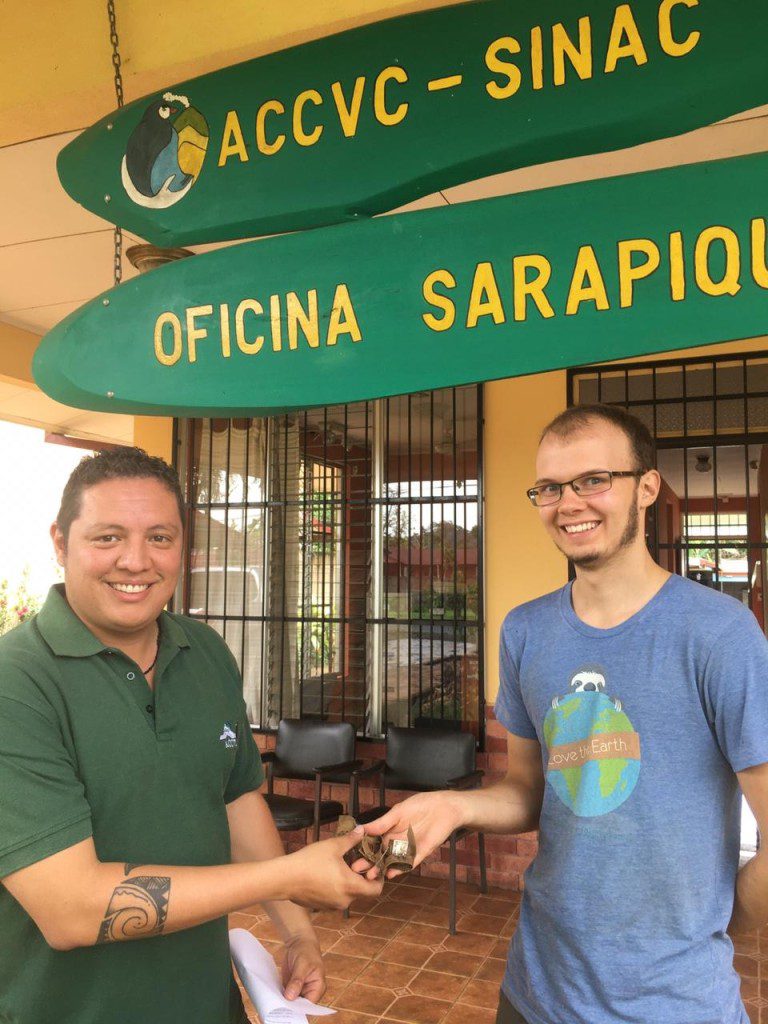
Then, when all hope seemed lost, on the morning of February 18 I found an important unread email. It was sent two weeks ago, but I hadn’t checked my email since Pebbles left. It was from Telonics, the tracking company that made the radio harness for Pebbles. Telonics said they received an email from SINAC about a recovered harness found on a tamandua with a serial number connected to me. I read the email again. Then again. My first thought was – “They have Pebbles! She’s alive! She’s safe! She’s nearby! We can go to Tirimbina together!” I screamed in happiness and relief. We called SINAC immediately. As fate would have it, they didn’t have Pebbles, only the harness. We drove to SINAC’s regional office in Sarapiqui to find out what happened. We discovered the harness was cut off by a farmworker and damaged irreparably on January 31, only a few days after I lost sight of her. The property where she was found was located about 1.5km to the southwest of us near Highway 4.
My heart sank after hearing this. I thought to myself, “She could easily get runover like the adult tamandua we saw on the highway just a week ago.” I should have been relieved to finally know what happened to Pebbles and that she was no longer wearing a harness that could have killed her. But, all I could think about was the highway and the lifeless eyes of the dead tamandua I saw. All I could feel was worry and dread. I put on a fake smile and took a picture with a man from SINAC with the recovered harness. Everyone was overjoyed about the good news. “Did you hear the good news?!” they announced proudly to the group chat, “We finally found Pebbles! She’s free now without the harness!” Many sent me messages of congratulations. “Good job Duncan, you did great! We’re so proud of you!” I felt I didn’t deserve to celebrate or receive any praise. Pebbles was still out there facing a whole host of dangers in a human-dominated landscape, instead of a protected natural reserve. It was not a victory for me.
Maybe I’m being too hard on myself though. Trying new things comes with many unknowns and risks. This was the first reintroduction study of a captive-raised tamandua using a radio harness. I didn’t even know if the harness would stay on or not when I started. I’m glad I made it as far as I did. In addition, I was trying to release Pebbles at a place TRR had never released animals before. That being said, I’m immensely grateful to have had the opportunity to work with Pebbles at Toucan Rescue Ranch’s Release Site. I collected some great data on her space use and activity patterns and I trained her well. She has just as much a chance of survival in Nazareth, Sarapiqui as any other wild tamandua living here.
I have now accepted the reality that I will never see Pebbles again and I have tried to move on as best I can. I made plans to volunteer at another rescue center to work with other orphaned tamanduas. I may not have gotten the fairy tale happy ending I wanted for Pebbles, but I tried my best and I learned a ton about how to improve the process of tamandua reintroduction.
Next time, I’ll do even better! It’s only onward and upward from here on out!
This article was written by Duncan Coleman. He is from Wimberley, Texas and a student from Stanford University. Duncan is in his senior year of undergrad majoring in Earth Systems. He has worked as an independent researcher at the Toucan Rescue Ranch Release Site, where he is gathering data to implement a training, release, and tracking protocol for tamanduas.
